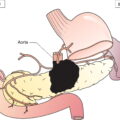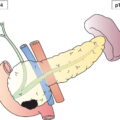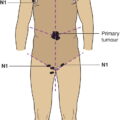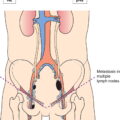There should be histological confirmation of the disease and division of cases by histological type and grade. The following histological types are not included: Note Cystosarcoma phylloides is staged as a soft tissue sarcoma of the superficial trunk. The regional lymph nodes are those appropriate to the site of the primary tumour. Regional node involvement is rare, and cases in which nodal status is not assessed either clinically or pathologically could be considered N0 instead of NX or pNX.
SOFT TISSUES (ICD‐O‐3 C38.1–3, C47–49)
Rules for Classification
Anatomical Sites
Histological Types of Tumour
Regional Lymph Nodes
TNM Clinical Classification
T – Primary Tumour – Extremity and Superficial Trunk
TX
Primary tumour cannot be assessed
T0
No evidence of primary tumour
T1
Tumour 5 cm or less in greatest dimension (Figs. 311, 312)
T2
Tumour more than 5 cm but no more than 10 cm in greatest dimension (Figs. 311, 313)
T3
Tumour more than 10 cm but no more than 15 cm in greatest dimension (Fig. 314)
T4
Tumour more than 15 cm in greatest dimension (Fig. 315, 316)
Stay updated, free articles. Join our Telegram channel

Full access? Get Clinical Tree








